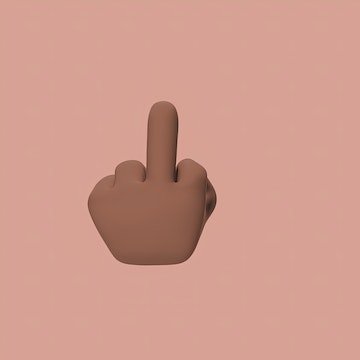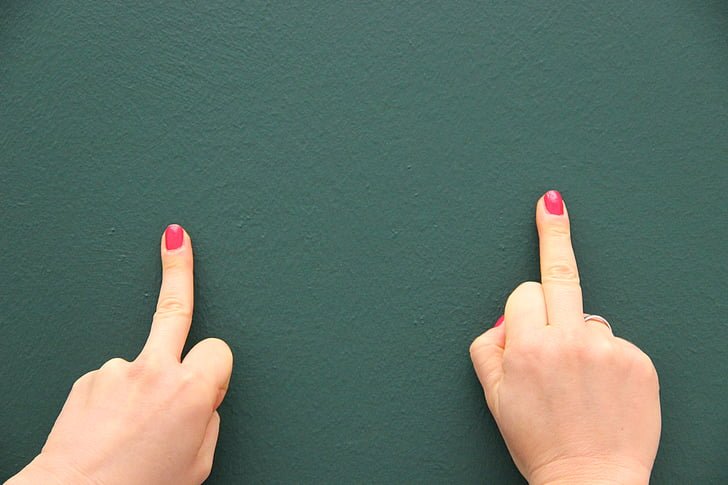In Western culture, one of the most disrespectful signs to show another person as a form of insult is the middle finger. But does this finger have the same hostile and insulting significance in China?
Well, Let us see..
How did this Gesture start in China?

The history of the middle finger goes back to Ancient Greek and Ancient Rome. In ancient times, this finger was used as a sexual insult. So, this remained its most widespread meaning throughout the world, including china until today.
Also, the usage of middle finger in China dates back to several years in the past. Yes, in Chinese religions such as Buddhism, Hinduism, or Taoism, the middle finger was used as part of the mudras and meditation tactics from the beginning of these religions. And if you know, Taoism dates back to 500 B.C.E., while Hinduism dates more than 4,000 years in the past, and Buddhism has a history of 2,500 years.
Middle Finger Gesture: 4 Meanings in Chinese Culture

The Chinese culture has several meanings for the middle finger, and not all are disrespectful. Depending on the context, the middle finger could be a greeting, a meditation, or even a sorcery sign. Let’s understand all the meanings of the middle finger from the perspective of Chinese culture!
In China, the middle finger can have different meanings according to the context it is used in.
- Spiritual meanings:
The Hindu Chinese minority calls the middle finger the “heavenly finger,” which connects to the universe and its infinity. Practitioners of Hinduism use the middle finger to chase away fear during their meditation sessions and direct energy in a positive manner.
In Buddhism, the middle finger is used in Karana Mudra and Dharmachakra. Karana Mudra is the practice that is meant to chase away evil and obstacles, as well as illness. Dharmachakra is the Wheel of the Law in Buddhism, and Dharma is the main symbol in Buddhism. Raising the middle finger in both mudras amplifies the benefits of meditation.
Also in Taoism, the middle finger is part of critical gestures such as Sword, Tao, Jin Gang, and San Qing. Taoism also uses the middle finger in rituals such as Nine Hand Seal or Kuji-in, which are meditation techniques that help raise consciousness and increase positive energy.
- As an insulting gesture:
Even if the meaning of the middle finger in China is more complex than in Western culture, people will still use it as an insulting gesture.
But the sexual interpretation of this finger is still not assigned to the Chinese culture as they borrowed it from other cultures.
- Meditation meaning:
Chinese elderly use the middle finger in their regular meditation practices, regardless of what religion they follow, as this finger symbolizes the Fire Element and is thought to have impressive power.
The Fire Element represents prosperity, wealth, and a positive outcome to everything the person meditates on. Therefore, activating this element through the middle finger is essential to meditation.
Chinese people raise the middle finger toward the sky as a healing mudra that helps reach a state of mental health and consciousness. In some yoga practices, the middle finger is also a form of connection to the higher self.
- Sorcery meaning:
The middle finger can also be used in different Chinese sorcery practices to chase dark or black magic. Since this finger symbolizes fire and positive energy, it is believed that it can shield the person or the situation against harmful external energy sent in their direction.
So, What does it Represent and Depict when Someone shows you this gesture as per Chinese?

Showing the middle finger in China can mean greeting someone or trying to tease them sexually.
It can also have a rude or insulting meaning if the context in which it is shown is an argumentative one or a fight.
What Finger gestures are Interpreted as rude in China?
While the middle finger might not be the ultimate insulting gesture in Chinese culture, other “versions of the middle finger” would be just as rude.
The fig sign. This is the equivalent in terms of rudeness to the Western middle finger. The fig sign is done by placing your thumb between the middle and index fingers. Showing this sign to someone is considered obscene and sexually insulting.
Index finger-pointing. Chinese people use the index finger to point at animals, which is considered disrespectful when it is used to point at people. If you want to point at someone else, you should do that with your open hand towards them.
The pinky finger. Showing the pinky finger to someone else in China means that you don’t like them or disagree with something they say.
Final words
The bottom line is that the middle finger in China will have a different meaning according to the paradigm used.
While this can be confusing for foreigners, it is not confusing for two Chinese people that are aware of the context in which the middle finger is used. And knowing these different meanings will also help you to understand the Chinese culture better, in all its spiritual complexity.
Irina Maria Tracy is a published author, writer, and journalist who lives in Bucharest, Romania. She completed her journalism and mass communication degree from the University of Bucharest and went on to publish some top books in the fiction genre. Some of her top books include 'Haunted Aliens' 'Vampires Rapture' 'Adverbs of Love' etc. Irina also worked as an investigative journalist for a year and even collaborated with a TV channel for a political talk show (Bah TV). She loves writing and has contributed to many top magazines and newspapers such as the 'Story Magazine' 'Curentul Newspaper' and many others.
